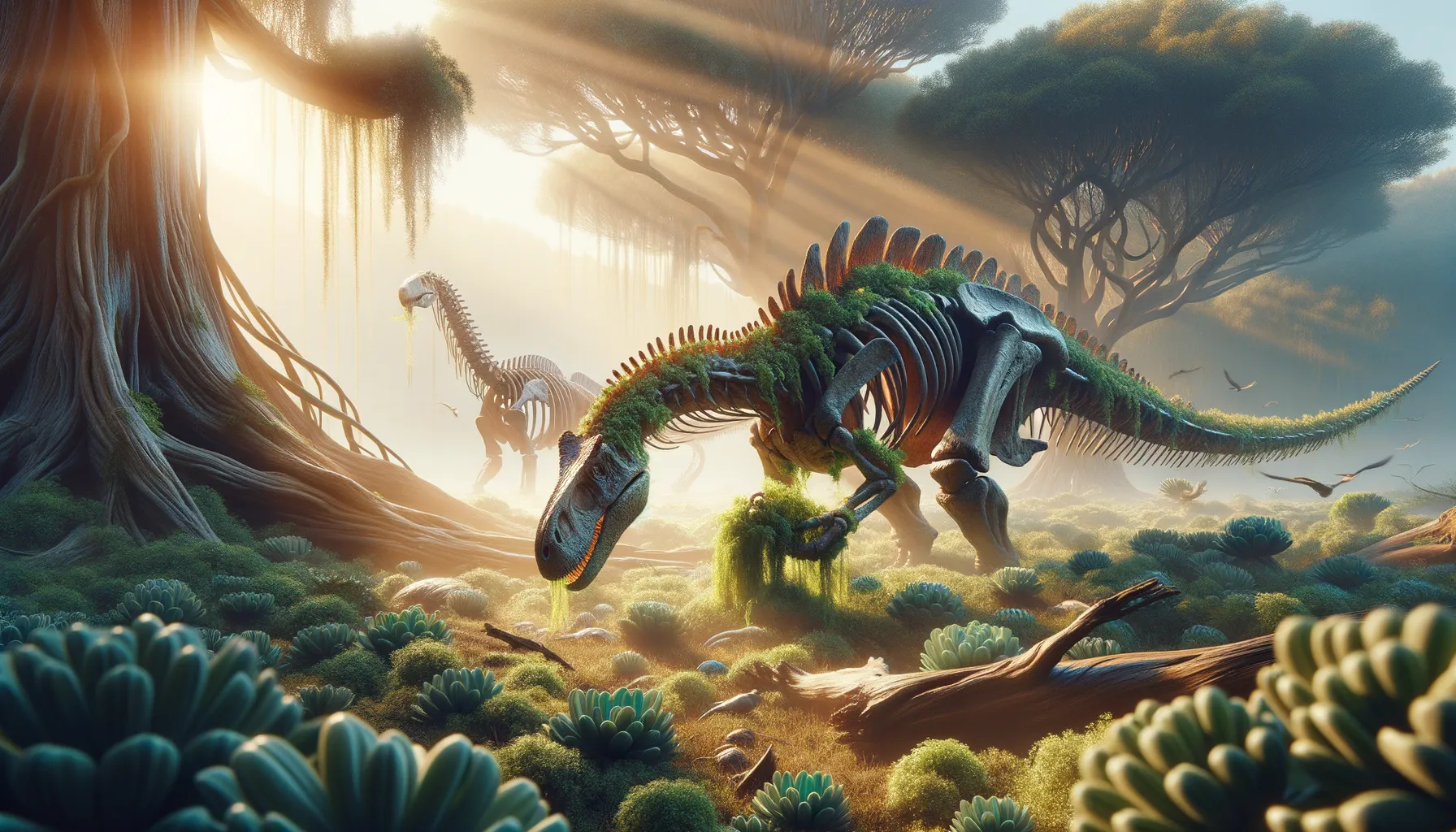
Yunganglong
Discover the grazers of the ancient world.
Period
Cretaceous
Length
Around 7 to 8 meters long.
Height
About 3 meters at the hip.
Weight
Approximately 3 tonnes.
Yunganglong was a medium-sized herbivorous dinosaur from the Cretaceous period, notable for its ability to graze on a variety of vegetation due to its moderate size. First discovered in China, its fossils have provided valuable insights into dinosaur distribution and behavior. Known for its distinctive skeletal features, this dinosaur lived in regions that once were part of the ancient supercontinent of Laurasia. It serves as a fascinating example of the diverse ecosystems present during its time.
Diet
Yunganglong was herbivorous, feeding predominantly on plants. Its diet consisted of cycads, conifers, and ferns, typical of Cretaceous flora.
Hunting
As an herbivore, Yunganglong did not hunt other animals. Instead, it foraged for food, using its keen sense of smell and sight to locate edible plant life.
Environmental challenges
During the Cretaceous period, Yunganglong faced environmental challenges including fluctuating climate conditions and competition for food resources. Predators were a constant threat, requiring constant vigilance while grazing. Changes in vegetation types could also impact its feeding strategies, demanding adaptation over generations.
Speed
Moderate, capable of steady walking.
Lifespan
Estimated up to 30 years.
First discovery
Discovered in China in 2010.
Fun Facts
- Yunganglong was a dinosaur that lived during the Early Cretaceous period, around 125 million years ago.
- Its name, Yunganglong, means 'Yungang dragon,' named after the Yungang Grottoes near where its fossils were discovered in China.
- This dinosaur was a herbivore, meaning it primarily fed on plants, likely feasting on the rich vegetation of its time.
- Yunganglong belonged to the group of dinosaurs known as ornithopods, which were known for their bird-like feet and often moved in herds.
- Despite being a plant-eater, Yunganglong had strong hind limbs that could have aided in a fast getaway from predators.
- The discovery of Yunganglong has helped paleontologists understand more about the diversity and evolution of herbivorous dinosaurs in Asia.
- Yunganglong's fossils were first described in 2013, making it a relatively recent addition to our knowledge of prehistoric life.
Growth and Development
Yunganglong likely experienced rapid growth during its juvenile stages to reach its adult size quickly, which was a vital survival strategy. Bone studies suggest that it grew steadily over its lifespan. This growth would have required substantial amounts of food, emphasizing the need for abundant plant resources in its habitat.
Habitat
Yunganglong inhabited lush forested areas and open plains, with ample vegetation to support its diet. Its environment would have included a mix of wooded and open areas, allowing it to browse a variety of plant life. These habitats were likely part of subtropical to temperate zones with moderate rainfall.
Interaction with other species
Yunganglong shared its environment with a variety of other dinosaur species, both herbivorous and carnivorous. While it would have been non-aggressive, it may have formed herds for better protection against predators. These groups could help in finding food and maintaining vigilance against potential threats.
Natural lifespan
Yunganglong could live up to 30 years in the wild.
Reproduction
Yunganglong laid eggs, probably in clutches, in nests constructed on the ground. Like many dinosaurs, it might have practiced some form of parental care, possibly guarding the nest from predators. The incubation period would depend on environmental conditions, with hatchlings needing quick growth to evade predation.
Social behaviour
Yunganglong likely exhibited social behavior, potentially forming herds or family groups. Such social structures would provide advantages like shared vigilance against predators and increased foraging efficiency. Social interactions could also play a role in mating displays and territorial disputes within the species.
Fossil locations
Fossils of Yunganglong have been found primarily in China, providing vital clues about its existence and habits. These locations suggest it lived in diverse ecosystems, offering insights into paleobiogeographic patterns. They contribute to our understanding of the distribution of herbivorous dinosaurs during the Cretaceous period.
